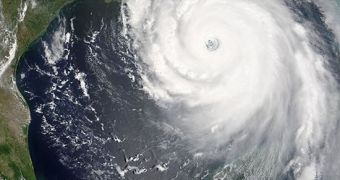In a new report released by Severe Storm Prediction, Education and Evacuation from Disasters Center (SSPEED), which is based at the Rice University, researchers are drawing attention on the possible impacts a category 5 hurricane could have on the cities of Houston and Galveston. According to the experts, both of these cities, and the areas around them, could suffer extensive damage, were a Katrina-force storm to hit them head-on. Also vulnerable to severe storms is the Houston Ship Channel, the area that houses no less than 25 percent of all refineries in the United States.
“There are warning signs across the board. Ike was a Category 2 hurricane, and it caused $30 billion in damage. Had that same storm struck 30 miles farther south, it could easily have caused $100 billion in damage. Had it struck that location as a Category 4 storm, like Carla, the results would have been catastrophic,” explains the Rice Herman Brown Professor of Engineering Phil Bedient, who is also a coauthor of the new report. He is also the director of SSPEED. The new analysis is extremely important when considering that the hurricane season is no more than a week away.
The new document was presented to scientists at a Rice-hosted workshop called the 2010 Coastal Resilience Symposium. “Our team is taking an in-depth, scientific look at structural proposals like the Ike Dike and other dike solutions, as well as nonstructural proposals related to land use. Our work so far has revealed a number of different structural and nonstructural solutions. There are dozens of communities along the coast, and each is unique in some way,” says RICE professor in the practice of environmental law Jim Blackburn.
“We are attempting to identify the most cost-effective and environmentally acceptable methods of providing a basic level of protection, including both structural barriers and nonstructural approaches that take advantage of natural features like barrier islands and storm-surge storage in wetlands. And make no mistake about it – the solutions that are chosen to deal with this flood-surge problem will determine the landscape of the future for the upper Texas coast,” he adds. The expert is also a coauthor of the new investigation.
SSPEED found numerous problems with existing dike and levee systems, and say that most of them are not able to handle a storm more powerful than Ike, or that strikes further south. The report also determined that the Galveston Bay Area would suffer extensively in case of a class 5 hurricane, with nearly 65 percent of all bridges believed to be at hug risk of receiving significant damage. Finally, the researchers note that the evacuation infrastructure set in place today, which aims to evacuate 1,000,000 people, is entirely insufficient and underdeveloped.

 14 DAY TRIAL //
14 DAY TRIAL //